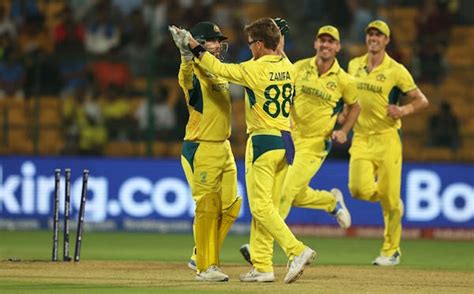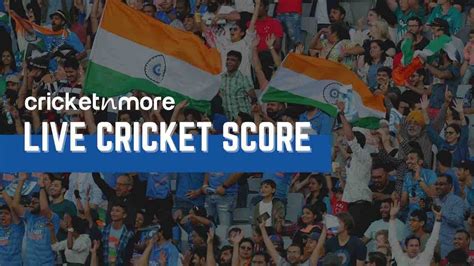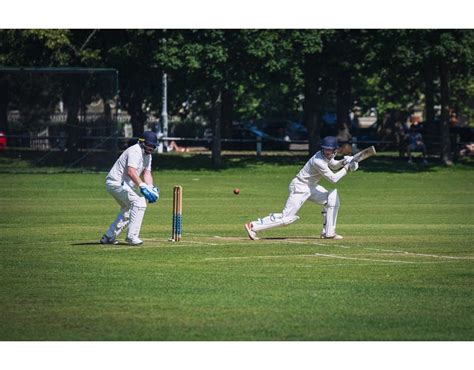Explore the essentials of cricket sponsorships, key players, brand visibility, investment impact, and future trends in this comprehensive guide.Cricket, a sport that unites millions across the globe, has seen a monumental rise in the significance of sponsorships, shaping both its financial landscape and the way brands connect with fans. From multinational corporations to local businesses, various stakeholders are investing heavily in this passionate game, capitalizing on its immense popularity and dedicated fan base. In this article, we will explore the intricacies of cricket sponsorships—delving into who the major players are, how these partnerships elevate brand visibility, and the processes involved in securing sponsorships. We’ll also examine how to measure the impact of these investments and share insights into the future trends that could redefine the sponsorship arena. Join us as we take a comprehensive look at this fascinating aspect of cricket, uncovering the dynamics between those giving and getting in the world of sponsorships.
Understanding The Basics Of Cricket Sponsorships
Cricket sponsorships play a pivotal role in the financial landscape of cricket, influencing everything from player salaries to hosting arrangements and tournament operations. At its core, cricket sponsorship involves brands and organizations investing in cricket teams, tournaments, or players to gain visibility and reach targeted audiences. This mutually beneficial relationship enhances the financial sustainability of the sport while offering brands an innovative platform to market their products and services.
Here are some essential elements that define the basics of cricket sponsorships:
| Element | Description |
|---|---|
| Types of Sponsorships | Includes title sponsorships, team sponsorships, player endorsements, and event sponsorships. |
| Objectives of Brands | Enhance brand recognition, build customer loyalty, and increase sales through targeted marketing. |
| Return on Investment (ROI) | Measuring the effectiveness of sponsorship through brand exposure on media platforms and customer engagement. |
| Target Audience | Understanding the demographic and psychographic profile of cricket fans to tailor marketing strategies. |
In essence, cricket sponsorships provide a robust framework for businesses to connect with millions of fans globally, reflecting the growing importance of strategic partnerships in sports. As brands increasingly recognize the value of associating with cricket’s rich legacy and passionate fanbase, the landscape of cricket sponsorships continues to evolve, creating new opportunities and challenges for all stakeholders involved.
Key Players In The Cricket Sponsorship Landscape
The cricket sponsorship landscape is vast and multifaceted, with various stakeholders playing pivotal roles. In understanding who the key players are in cricket sponsorships, we can identify the sources of funding and the entities that benefit from these partnerships.
- Brands and Corporations: These entities often serve as the primary sponsors, investing significant resources to have their names associated with cricket teams, tournaments, and leagues. Major telecommunications companies, beverage brands, and automotive manufacturers frequently emerge as leading sponsors in the cricketing world.
- Cricket Boards: National and international cricket boards, such as the Board of Control for Cricket in India (BCCI) and the International Cricket Council (ICC), negotiate and manage sponsorship deals. They play an essential role in maximizing the value of cricket sponsorships through strategic partnerships.
- Marketing Agencies: Many sponsorship deals involve third-party marketing agencies that facilitate partnerships, negotiate contracts, and help brands maximize their ROI through creative marketing campaigns tied to their sponsorships.
- Media Networks: Television and online media networks are crucial players, as they provide the platforms through which sponsors gain visibility. These networks often package sponsorship opportunities with their broadcasting rights, offering brands substantial exposure to cricket fans.
- Players and Teams: Individual players and cricket teams are also significant influencers in the sponsorship ecosystem. Star players often attract lucrative deals and endorsements, while teams leverage their fan base and performance to secure sponsorship contracts.
Understanding these key players is essential for anyone looking to navigate the world of cricket sponsorships. Recognizing how each stakeholder interacts within this dynamic environment can provide crucial insights into the growth and evolution of sponsorship in cricket.
How Cricket Sponsorships Enhance Brand Visibility
Cricket sponsorships are a powerful tool for brands to amplify their visibility and connect with a diverse audience. The sport’s enormous following, particularly in countries like India, Australia, and England, offers sponsors a unique platform to reach millions of potential customers. By associating their brand with popular cricketing events, companies can rapidly increase their exposure.
One of the primary ways cricket sponsorships enhance brand visibility is through high-profile events such as international tournaments and domestic leagues. These events attract massive viewership on television and streaming platforms, providing brands with extensive media coverage. Logos and advertisements displayed during matches, whether on players’ uniforms, boundary hoardings, or digital platforms, ensure that brands receive consistent visibility during key moments of the game.
Furthermore, cricket sponsorships foster a sense of affiliation among fans. When a brand sponsors a beloved team or player, it not only gains exposure but also gains credibility and goodwill. Fans often perceive sponsorship as an endorsement, associating the brand with the positive emotions tied to their favorite teams or athletes. This emotional connection can lead to increased customer loyalty and a more profound brand relationship.
Additionally, the interaction opportunities within cricket sponsorships are vast. Brands often engage in promotional activities during games, like contests and giveaways, which can stimulate social media activity. By leveraging platforms like Twitter, Instagram, and Facebook, brands can create buzz and user-generated content, further enhancing visibility.
In sum, strategic cricket sponsorships significantly improve brand visibility by capitalizing on the sport’s cultural resonance, extensive outreach through high-profile events, and the emotional connections formed with fans. As cricket continues to grow globally, the advantages of sponsoring teams and events are becoming more apparent, setting the stage for brands to explore new heights in visibility and consumer engagement.
The Process Of Securing Cricket Sponsorships
Securing cricket sponsorships involves a series of methodical steps that organizations must undertake to ensure both parties benefit from the partnership. Below are key stages in the process:
- Research and Identify Potential Partners: Before initiating any sponsorship dialogue, it’s crucial to research brands that align with your values and target audience. Understanding a brand’s prior involvement in cricket or their desired engagement level can provide a solid foundation for your outreach.
- Develop a Sponsorship Proposal: Create a comprehensive proposal outlining the benefits of the sponsorship, including audience reach, engagement metrics, and brand exposure opportunities. This proposal should resonate with the objectives of the potential sponsor, emphasizing how their investment in cricket sponsorships could yield favorable returns.
- Engage in Dialogue: Once your proposal is ready, initiate contact with potential sponsors. This can be done through formal meetings or networking events, where you can present your proposal face-to-face, allowing for a more personalized pitch.
- Negotiate Terms: If a brand shows interest, the next step involves negotiating the terms of the sponsorship. This includes financial agreements, deliverables, and branding opportunities during cricket events.
- Draft a Sponsorship Agreement: After reaching an agreement, it’s essential to formalize the partnership through a contract. This document should detail all agreed-upon terms, protecting both parties’ interests.
- Launch Activation Campaign: Once the contract is signed, the focus shifts to executing the sponsorship plan. This involves deploying marketing strategies to maximize brand presence during cricket matches and associated events.
- Monitor and Evaluate: After activation, measuring the effectiveness of the sponsorship is crucial. Use metrics such as audience engagement, social media impact, and sales figures to assess the success of the cricket sponsorships. This data is valuable for future negotiations and improvements.
By systematically approaching the process of securing cricket sponsorships, organizations can foster productive partnerships that enhance brand visibility and contribute to the growth of cricket as a sport.
Measuring The Impact Of Cricket Sponsorship Investments
Measuring the impact of cricket sponsorships is essential for brands to assess the effectiveness of their investments and improve future strategies. Several key performance indicators (KPIs) can be employed to gauge the success of these sponsorships:
| KPI | Description |
|---|---|
| Brand Awareness | Evaluate changes in brand recognition and recall before, during, and after the sponsorship period. |
| Engagement Levels | Monitor social media interactions, website traffic, and audience participation in campaigns associated with the sponsorship. |
| Sales Growth | Analyze the correlation between sponsorship activities and sales performance to gauge direct financial benefits. |
| Media Exposure | Assess the amount of media coverage generated and its perceived value, including broadcast, print, and online mentions. |
| Customer Sentiment | Conduct surveys or analyze social media feedback to understand audience perceptions and sentiments associated with the brand. |
Utilizing these KPIs, brands can effectively quantify the return on investment (ROI) from cricket sponsorships. By leveraging analytics tools and consumer feedback, companies can not only measure their current sponsorship impacts but also refine their future marketing strategies to align with audience expectations and market trends. This structured approach ensures that cricket sponsorships remain a valuable element within the overall marketing strategy, maximizing both reach and resonance with target audiences.
Future Trends In Cricket Sponsorships And Their Implications
The landscape of cricket sponsorships is evolving rapidly, shaped by various trends that are influencing how brands engage with the sport and its audience. Here are some key future trends to watch for:
- Increased Digital Engagement: With the rise of digital platforms, brands are looking to leverage social media and online content to create interactive and engaging sponsorship experiences. This trend allows for a more personalized connection with fans.
- Sustainability Initiatives: As global awareness of environmental issues grows, brands are increasingly seeking partnerships that align with sustainable practices. Future cricket sponsorships may focus on promoting eco-friendly initiatives, enhancing brand reputation while contributing to global causes.
- Diversity and Inclusion: In response to societal shifts, there is a growing emphasis on diversity and inclusion within sports. Sponsorships that highlight and support underrepresented communities are likely to gain traction, reflecting a more inclusive approach to brand partnerships.
- Technology Integration: As technology continues to play a significant role in sports, we can expect to see increased investment in innovative solutions. Brands may explore opportunities in augmented reality (AR) and virtual reality (VR) within cricket sponsorships, creating immersive experiences for fans.
- Data-Driven Strategies: The use of data analytics to measure engagement and ROI from sponsorships will continue to grow. Brands will seek measurable outcomes from their investments, pushing for more transparent metrics and analytics to gauge success.
The future of cricket sponsorships is set to become more dynamic and multifaceted, driven by technology, social responsibility, and an evolving fan engagement landscape. Brands that adapt to these trends will not only enhance their marketing strategies but also build deeper connections with audiences in the long term.
Frequently Asked Questions
What are cricket sponsorships?
Cricket sponsorships refer to financial support provided by companies or brands to cricket teams, tournaments, or events in exchange for advertising and promotional opportunities.
Why are sponsors interested in cricket?
Sponsors are attracted to cricket due to its large fan base, global reach, and the sport’s ability to engage audiences across different demographics, making it a lucrative marketing platform.
Who are some of the major sponsors in cricket?
Major sponsors in cricket include global brands like Coca-Cola, Pepsi, Nike, and financial institutions like Barclays and State Bank of India, who often partner with national teams and leagues.
How do sponsorships affect cricket teams and players?
Sponsorships provide vital funds for teams, allowing them to invest in training, facilities, and player development. For players, endorsements can be a significant source of income and can enhance their marketability.
What are the trends in cricket sponsorships?
Recent trends include a shift toward digital and social media engagement, increased focus on sustainability, and the involvement of tech companies as sponsors, reflecting changes in consumer behavior.
How do sponsorship deals benefit fans?
Sponsorship deals can lead to improved facilities and experiences for fans, lower ticket prices, and enhanced broadcast quality, ultimately improving the enjoyment of live and televised matches.
What challenges do sponsors face in cricket?
Sponsors may confront challenges such as the risk of negative publicity due to player behavior, fluctuating television ratings, and the need to stay relevant in an evolving market with changing consumer interests.









